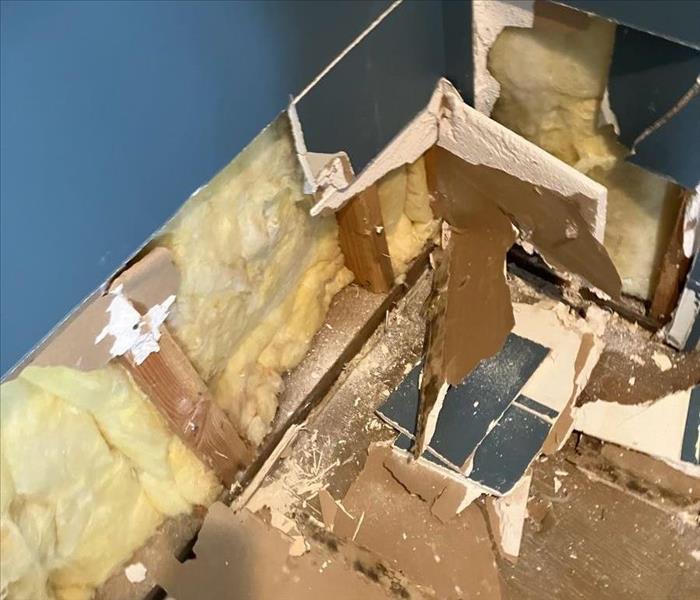Mold in Drywall: Identification and Repair
3/13/2024 (Permalink)
 In this blog, we will explore the signs of mold in drywall and provide tips on how to repair and remediate mold in drywall.
In this blog, we will explore the signs of mold in drywall and provide tips on how to repair and remediate mold in drywall.
Discovering mold in your drywall can be alarming for homeowners. While mold growth poses potential risks to your property, it is crucial to understand how to identify mold in drywall and effectively remediate it. In this blog, we will explore the signs of mold in drywall and provide tips on how to repair and remediate mold in drywall.
Identification of Mold in Drywall
Identifying mold in drywall is vital to address the issue promptly. Here are some signs that can help you identify mold in your drywall:
- Visible Mold Growth: The most apparent sign of mold in drywall is the visible growth of mold. It may appear as black, green, or brown spots or patches on the surface. If you notice any discoloration or fuzzy growth, it is essential to investigate further.
- Musty Odor: Mold often produces a musty and earthy odor. If you detect an unpleasant smell coming from your walls, it could indicate mold growth behind the drywall.
- Moisture or Water Stains: Water stains or moisture marks on the drywall can be an indication of a leak or dampness, which creates a favorable environment for mold growth. Investigate any stains or discoloration on the wall thoroughly.
Remediation of Mold in Drywall
If you have identified mold in your drywall, taking immediate remediation measures is crucial to prevent further damage. Follow these effective strategies to repair and remediate mold in drywall:
- Ensure Safety: Before starting the remediation process, take proper safety precautions. Wear protective equipment like gloves, goggles, and a mask to avoid direct contact with the mold and prevent inhalation of mold spores.
- Contain the Area: To prevent the spread of mold spores to other parts of your home, contain the affected area. Use plastic sheeting to seal off the workspace and isolate it from the rest of the house.
- Remove Damaged Drywall: Carefully remove the mold-infested drywall from the affected area. Use a utility knife to cut along the edges of the moldy section, making sure to dispose of the damaged drywall properly.
- Clean and Disinfect: Thoroughly clean the remaining surfaces of the wall surrounding the affected area using a mold cleaner recommended for use on drywall. Scrub the surfaces with a brush to remove any visible mold growth.
- Drying the Area: Allow the cleaned area to completely dry. Use fans, dehumidifiers, and open windows to promote airflow and remove any residual moisture. This step is crucial in preventing future mold growth.
- Replace Drywall: Once the area is dry, replace the removed drywall with new, mold-resistant drywall. Ensure that all joints are properly sealed to prevent moisture intrusion.
- Paint or Apply Mold-Resistant Coating: Apply mold-resistant paint or a mold-resistant coating to the repaired area as an additional preventive measure. This helps inhibit mold growth in the future.
- Address the Source of Moisture: Identify and rectify any sources of moisture that caused the mold growth in the first place. Fix leaks, repair plumbing issues, or improve ventilation to prevent future mold problems.
Identifying and remediating mold in drywall is essential for maintaining a healthy and safe living environment. By recognizing the signs of mold growth, safely removing affected drywall, and taking preventive measures, you can successfully repair and remediate mold in drywall. Remember to address the source of moisture to prevent recurrence and maintain a mold-free home.

 24/7 Emergency Service
24/7 Emergency Service